BUSINESS
High ROI Exterior Remodeling: Projects That Pay Off
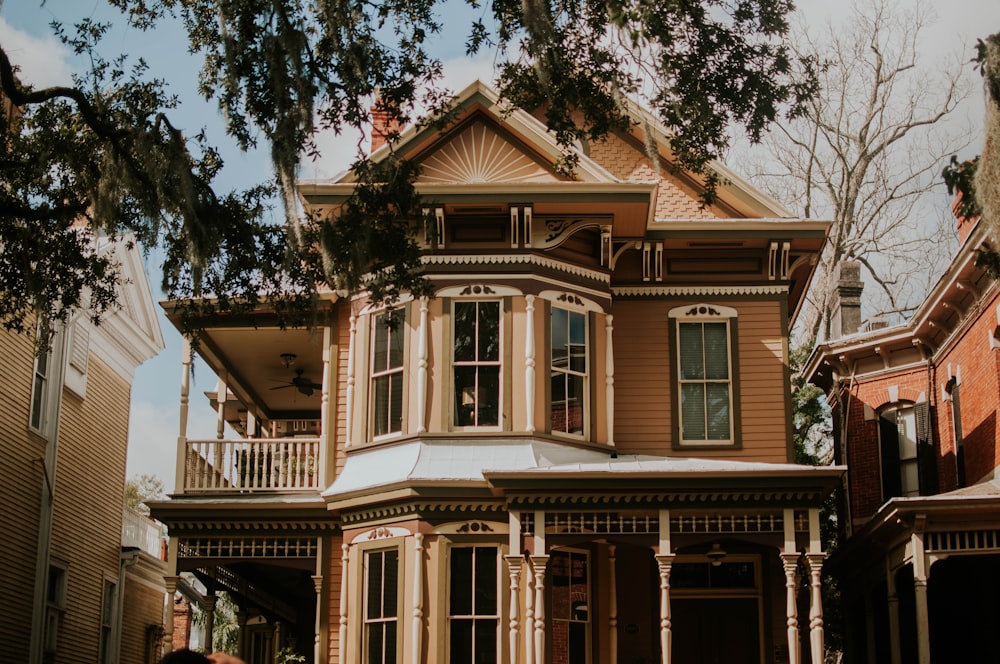
In today’s ever-changing real estate market, homeowners are constantly looking for ways to increase their property’s value without breaking the bank. Exterior remodeling projects not only enhance the curb appeal of your home but can also offer a significant return on investment (ROI) when it’s time to sell. From fresh coats of paint to full-scale landscaping, the options are vast, but which projects truly pay off? In this article, we’ll explore ten exterior remodeling projects guaranteed to provide a high ROI, ensuring your efforts and investments are well-spent. Let’s dive in and transform your home into a neighborhood standout.
1. Paint Your Home’s Exterior
Nothing rejuvenates your home’s exterior like a fresh coat of paint. Over time, paint fades, chips, or peels, diminishing your home’s overall appeal and value. By choosing modern, weather-resistant paints, you can protect your home from the elements while boosting its curb appeal. The right color combination can make architectural details pop and create a welcoming ambiance. This cost-effective project not only enhances visual appeal but can also significantly increase your home’s marketability, making it a top contender for high ROI exterior remodeling projects.
2. Upgrade to Energy-Efficient Windows
Replacing old, drafty windows with new, energy-efficient ones is a game-changer for both your home’s appearance and its energy consumption. Energy-efficient windows reduce heating and cooling costs, making your home more comfortable year-round. Plus, they add an updated look to your home’s exterior. When you choose a reputable provider like Ladder Legends for your window upgrades, you’re not just investing in your home’s efficiency and aesthetics; you’re also leveraging expert craftsmanship and quality materials that stand the test of time, further enhancing your ROI.
3. Install New Siding
The siding on your home plays a crucial role in protecting it from weather and wear while also contributing to its overall aesthetics. Over time, siding can become worn, damaged, or outdated, affecting your home’s value and appeal. Installing new siding not only refreshes the look of your home but also provides additional insulation, potentially lowering energy costs. Whether you opt for vinyl, fiber cement, or wood, new siding is a robust investment that significantly impacts curb appeal and home value.
4. Landscape Your Front Yard
Landscaping is more than just planting a few flowers; it’s about creating a cohesive design that enhances your home’s architectural features and complements its surroundings. A well-landscaped front yard can transform your home’s exterior from bland to beautiful, making a strong first impression on potential buyers. By adding a mix of perennial plants, shrubs, and trees, you can create a visually appealing landscape that requires minimal maintenance but offers maximum impact on your home’s value and curb appeal.
5. Add a Deck or Patio
Outdoor living spaces have become increasingly popular, especially as more people seek to enjoy leisure time at home. Adding a deck or patio extends your living space to the outdoors, providing a perfect spot for relaxation and entertainment. This addition not only enhances your quality of life but also attracts potential buyers looking for homes that offer outdoor amenities. Depending on the materials used and the complexity of the design, a deck or patio can offer an excellent ROI by increasing your home’s usable space and appeal.
6. Replace the Roof
A sturdy, visually appealing roof is crucial for protecting your home from the elements and adding to its overall aesthetics. Replacing an old or damaged roof can prevent costly water damage, improve energy efficiency, and significantly boost your home’s curb appeal. With various materials available, from traditional asphalt shingles to modern metal roofing, homeowners can choose an option that best suits their home’s style and their budget. Investing in a high-quality roof replacement not only ensures your home’s protection but also contributes to its market value, making it a wise choice for those seeking a high ROI on exterior remodeling projects.
7. Enhance Outdoor Lighting
Strategic outdoor lighting can transform your home’s exterior, highlighting architectural features and landscaping while improving security. From path lights to accent lighting, the right fixtures can create a welcoming ambiance and make your home more appealing to potential buyers. This project is relatively low-cost but can significantly impact your home’s nighttime curb appeal, enhancing its safety and beauty. Additionally, taking into account ppl electric rates when planning your lighting can help you optimize energy efficiency and manage your utility costs effectively.
8. Refresh or Replace the Front Door
The front door is more than just an entryway; it’s a focal point of your home’s exterior. A fresh coat of paint in a bold color can make your door pop, while replacing an old, worn-out door with a modern, energy-efficient model can significantly improve your home’s aesthetic and security. This simple upgrade can dramatically change the first impression your home makes and offers one of the highest ROIs among exterior remodeling projects.
9. Add or Update Fencing
A well-designed fence not only provides privacy and security but also adds to the aesthetic appeal of your home. Whether you’re replacing an old fence or installing a new one, choosing the right materials and style can complement your home’s exterior and landscaping. This addition not only enhances the appearance and functionality of your outdoor space but also appeals to buyers looking for homes that offer privacy and security.
10. Repair or Replace the Driveway
An often-overlooked aspect of exterior remodeling is the driveway. Cracks, potholes, and stains on your driveway can detract from your home’s overall curb appeal. Repairing or replacing your driveway presents a clean, well-maintained look to visitors and potential buyers. Options like stamped concrete or pavers can add a decorative element to your home’s entrance, further enhancing its value and appeal.
Conclusion
Investing in high ROI exterior remodeling projects is a strategic way to enhance your home’s curb appeal and increase its market value. From painting the exterior to upgrading windows, landscaping, and adding outdoor lighting, each project adds its own unique value and appeal. Remember, the key to maximizing your return on investment is choosing projects that not only improve the aesthetic of your home but also its functionality and efficiency.
When planning your exterior remodeling projects, consider the impact on your home’s overall appeal and the potential return on investment. By focusing on projects that offer both aesthetic and practical benefits, you can ensure that your investments pay off, making your home not only more beautiful and enjoyable to live in but also more attractive to potential buyers. Whether you’re planning to sell soon or just looking to improve your home for the future, these exterior remodeling projects are sure to provide the high ROI you’re aiming for.
BUSINESS
Can a Diamond Be a Smart Investment?
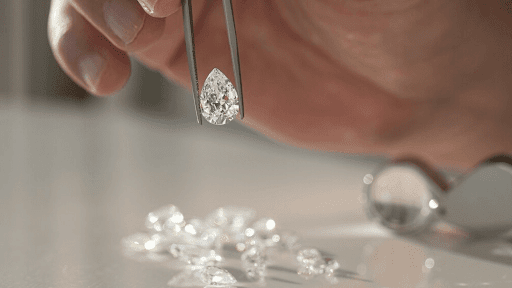
Consider possessing a piece of nature’s artistry—an object that captivates and could appreciate in value as time progresses. This describes the allure of diamonds, with its enduring appeal symbolizing wealth and luxury. But, beyond the glimmer, can a diamond be a sound investment? With platforms like Rare Carat, the debate on whether diamonds could serve a purpose other than luxury expenditure is gaining traction. So, let’s look into how diamonds could become a smart investment and why Rare Carat is the pinnacle of this.
Investing in diamonds
In today’s market, diamonds may be regarded as a display of status, but their ability to serve as an investment is also gaining attention. In the past, diamond value was defined by its class, scarcity, demand and even the quality of the gemstone. If chosen wisely, diamonds have the ability to appreciate in value.
As is common knowledge, diamonds are safes for one’s wealth. Alluring gems, such as diamonds, yield a level of security during economic turmoils. The 4 Cs Cut, color, clarity, and carat weight, are the telling constituents of a diamond’s quality and value. Without a doubt, high-quality diamonds are precious long-term assets. Some even appreciate in value over several decades.
What Makes Rare Carat Unique for Investments in Diamonds?
For those interested in buying diamonds as an investment opportunity, the trusted platform is Rare Carat. In the past, purchasing diamonds was a complicated process – often shrouded in mystery, leading to significant consumer uncertainty regarding the value of their purchases. This is no longer the case with Rare Carat. The service offers straightforward diamond pricing, professional guidance, and a diverse collection of quality diamonds.
Comparison and Transparency: Optimal Buying Strategy
Unlike other retailers, Rare Carat’s pricing policy affords customers greater transparency. Pricing is often a gray area when it comes to buying diamonds. Many retailers mark their prices at an exorbitantly high value without justifying the actual worth of the stone. Rare Carat removes this guess work. Through the service, customers are able to access deals from certified jewelers and therefore make informed decisions when investing.
The platform ensures you get the best value for your investment, be it a diamond with exceptional cut or one with an even better color – all based on the user’s preferences and requirements.
Expert Guidance Every Step of the Way
Indulging in the world of diamond investment can be a daunting task for beginners, but Rare Carat’s expert help is ready to step in to assist. A diamond and gemstone consultant is ready to offer tailored strategies to every client. From understanding a diamond’s worth to selecting the best piece available, Rare Carat makes sure clients are well informed before the purchase.
Other features such as the Diamond Price Calculator interactively enable customers to evaluate the worth of every single diamond individually. This tool is favorable to customers because it allows them to appreciate the value of diamonds in real time.
Certified Authenticity
Investing in diamonds comes with specialization, and certification is on the top. The firm only deals with GIA (Gemological Institute of America) certified diamonds, which is an authoritative body in the grading of diamonds. The 4 Cs reputation is guaranteed by GIA whereby their certification reflects the status of the diamond. It is prudent to buy GIA-certified diamonds as they are genuine assets being put into a company.
The Investment Case for Diamonds
Unlike other precious stones, diamonds pose another avenue in the realm of investment finance. This unique trait lieu to investing in real estate and stocks brings various advantages.
Diamonds as a Hedge Against Inflation
Like gold, diamonds help in hedging inflation. The most sought after diamonds can maintain or appreciate in value. This makes them appealing to investors globally. After all, quality diamonds are always in demand and are a great asset to hold during economic downturns.
Longevity and Resale Value
At least one diamond should be within reach for every investor considering them as a long term asset. Due to the exceptional selection standards employed at Rare Carat, the company along with its customers will only succeed. Investors all over the world are confident that diamonds will gain value overtime, as they are not like other assets which depreciate in value.
Along with being pure, the sentimental and financial value associated with diamonds make the asset desirable, especially when passed down.
Emotional and Aesthetic Value
The beauty behind every investment in diamonds is the emotions that people associate with them. Knowing that they are key gifts in engagements or anniversaries allows some peace. Rare Carat claims that apart from money, the worth of a diamond and its beauty is beyond measure which ensures the customer satisfaction.
What Makes Rare Carat Your Preferred Source For Investing In Diamonds
If you are contemplating on investing in diamonds, Rare Carat equips you with several tools to better their decision. Their diamond selection consists of GIA certified diamonds with expert guidance and pricing that doesn’t attempt to hide anything. For both novice and seasoned investors, Rare Carat guarantees a sensible decision.
Making a purchase from a reputable platform like Rare Carat ensures the purchase is secure and information based. Being a starting point for a diamond investment, Rare Carat offers affordable pricing, knowledgeable experts, along with their exquisite selection of diamonds. Rare Carat will help guide you whether you are new to the diamond world or are looking to expand your portfolio.
BUSINESS
How to Buy a Sword from Japan
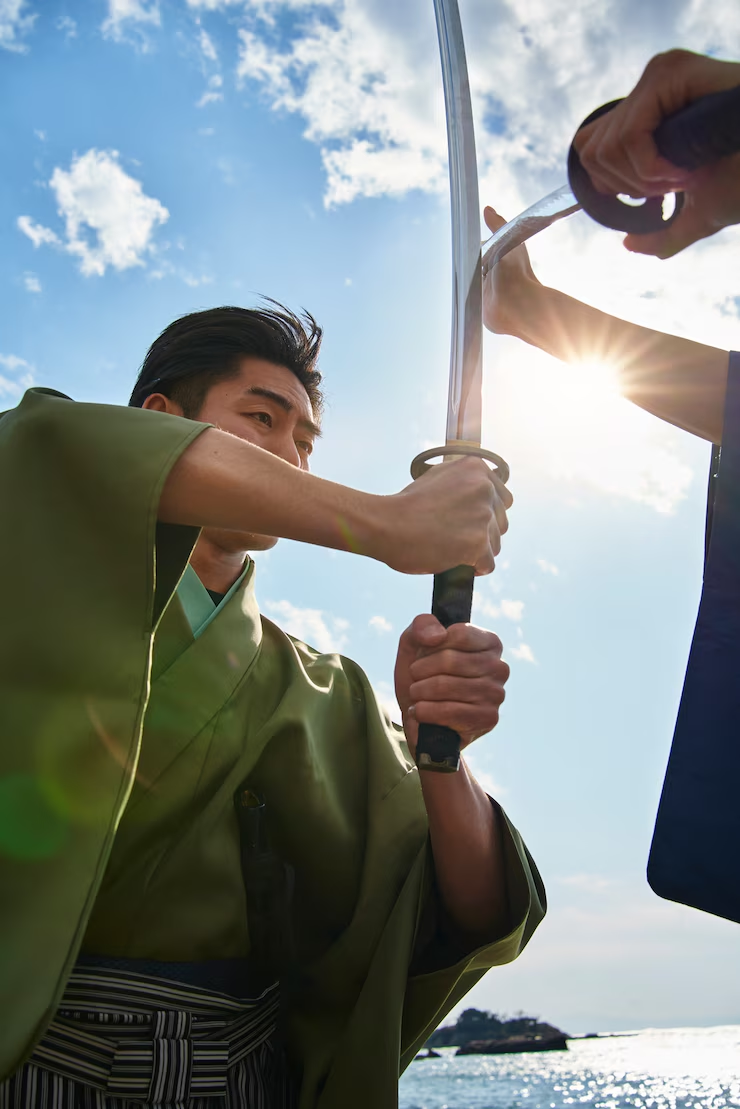
If you’re a sword enthusiast, Japan is the best country to purchase an authentic blade. Japanese weapons have an extraordinary cultural legacy. As symbols of craftsmanship, they attract martial artists, collectors, and culture lovers alike.
However, owning a Japanese sword isn’t as hassle-free as acquiring pottery or a kimono. You must recognize the country’s commitment to one of its iconic symbols. Still, you can buy a sword if you observe the legal requirements for exporting weapons. This article provides more information about purchasing swords from Japan.
Types of Japanese Swords
Japan has a rich and colorful history rooted in martial arts tradition. At the core of these practices are iconic bladed weapons. Although the katana is famous among collectors, there are other forms of weapons, including:
- Wakizashi: This weapon is shorter but similar to the katana. It measures around 50 cm long and was frequently carried with the katana.
- Tanto: The tanto doesn’t technically belong in the sword category. It has a sharp edge and is often used as a stabbing and slicing instrument.
- Tachi: The sword is the katana’s predecessor and has a curved shape. It was explicitly crafted for Samurais on horseback to strike foot soldiers effectively.
Each of these swords has unique qualities. Choosing either depends on your preference, historical value, or aesthetics.
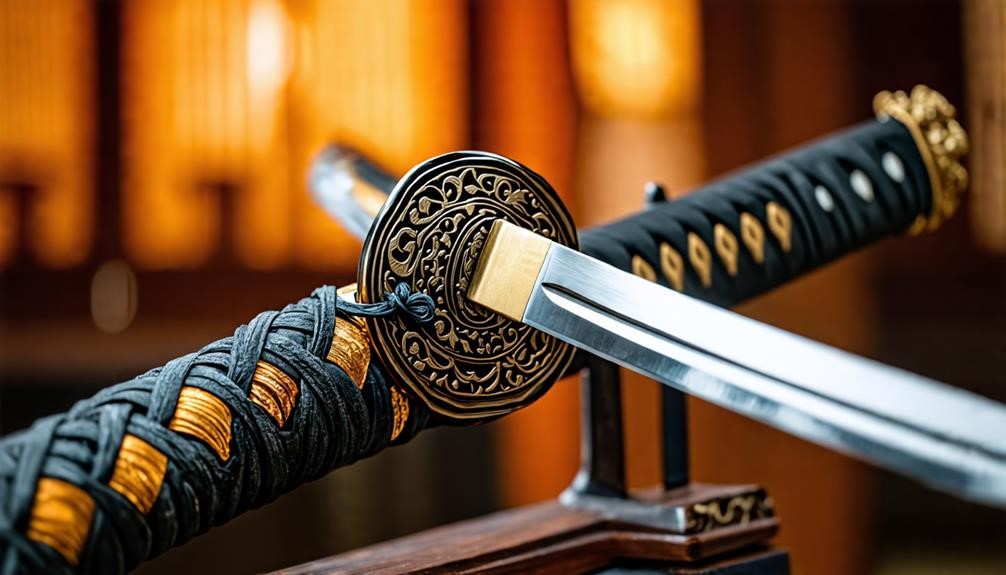
Authenticity and Value
Not all Japanese swords are genuinely authentic. The quality of ancient Japanese weapons lies in the long process of crafting them. Authentic Japanese swords (Nihonto) are crafted from high-quality Tamahagane steel. It often involves folding the material to create a strong, sharp blade. Besides, genuine swords have slight curves and usually come with the artisan’s signature (Mei).
Where to Buy Japanese Swords
Japanese Samurai’s weapons are iconic cultural symbols. No wonder many collectors and martial artists may want to own these legendary swords. Here’s how you can purchase them:
Buying Online
Many online platforms sell weapons under strict rules and regulations. When buying a Japanese sword online, get it from a trusted source. Most Japanese sites deal in genuine swords. They provide certifications, detailed descriptions, and images to convince buyers of quality.
Websites such as Samurai Store and Aoi Art have impeccable reputations. However, you should always check customer reviews and verify a seller’s authenticity.
Other marketplace sites like eBay also sell Japanese swords. But counterfeit items and scams are common. Therefore, you need to exercise caution before buying from these platforms. The sites may lack the authenticity that other specialized stores offer.
Buying in Japan
Traveling to Japan to purchase a sword enables you to examine it firsthand. You might even get the opportunity to meet the artisans behind it. Kyoto and Tokyo are among the top locations where you can find reputable sword sellers.
Before purchasing a sword, visit the Tokyo Sword Museum. It has examples of high-quality, new, and vintage pieces.
In-person buying allows you to view the weapon physically. This approach can help you identify a replica or low-quality piece and avoid buying it. Physical inspection will also enable you to get first-hand information from the dealers about the sword’s craftsmanship.
Purchasing Through Auction Houses
Auction houses can be ideal for collectors who prefer rare or antique pieces. Popular auction houses like Bonhams and Christie’s regularly conduct sword auctions, which provide attendees with a platform to learn more about a sword’s authenticity.
However, buying from an auction requires extensive research. Consider getting more information about the auctioneer’s reputation and whether they specialize in Japanese weapons. Antique swords usually attract a premium due to their historical value. But this can be a worthwhile investment for seasoned collectors.
Legal Considerations and Regulations
Sword export and ownership are regulated strictly in Japan. Japanese law regulates genuine swords, and some are recognized as cultural assets. That means you can only export them with a permit.
Exporting a sword from Japan requires certification from bodies like the Nihon Bijutsu Token Hozon Kyokai or the Japanese Sword Preservation Society. These entities validate the sword’s authenticity and ensure it complies with export laws.
When purchasing from Japan, always consult the seller for the necessary export documents. This documentation is essential because customs officials may seize unregistered swords.
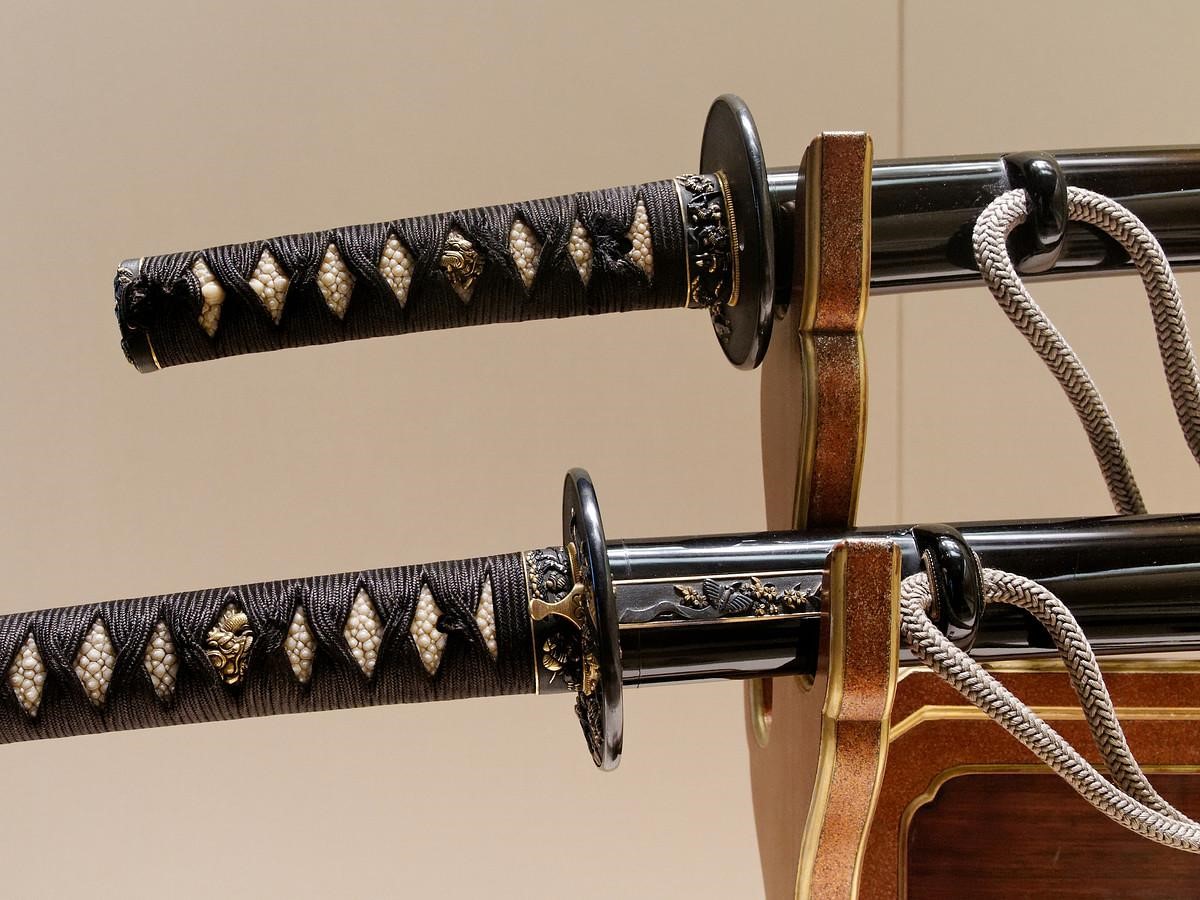
Import Laws in Different Countries
Your country’s import laws can impact your purchases. In America, swords are legally imported after being declared at customs. In the European Union, weapons with specific blade lengths may require special permits.
You can learn more about these requirements by consulting your local customs officials. It’s necessary to be well-informed before shipping a sword. Importing weapons without the relevant paperwork can result in fines or confiscation.
How to Ensure You’re Buying an Authentic Japanese Sword
A genuine Japanese sword has a unique marker. It can bear engravings like the ‘Mei’ or a maker’s signature carved on the blade’s tang.
Any authentic sword must have a certificate of authenticity. This document confirms that the weapon is a genuine Japanese piece of craftsmanship.
Assessing Quality
Quality is key when buying a Japanese sword. Authentic pieces are popular for their colorful grain pattern, called Hada, easily visible on the blade. Another key feature is the Hamon. A temper line formed during heat-treating gives the blade a unique edge pattern.
You need to examine these aspects when buying swords in person carefully. For online purchases, ask for high-quality photos or images of the weapons. Markers are apparent indicators of the authenticity of the sword.
Factors Influencing the Cost of Japanese Swords
The price of Japanese swords varies widely. Factors like type, age, and historical significance determine the cost. A new sword in the market can fetch $500 to $1,000. The price can run in tens of thousands, especially for a high-quality antique piece. Custom swords can be extremely expensive because of the high level of craftsmanship involved.
Proper Packing and Shipping Options
Shipping a sword internationally requires proper packing to protect the blade. Many Japanese dealers specialize in securely packaging swords for export. Choose a shipping agent with insurance, tracking, and experience dealing with international shipments.
Once you receive your sword, preserve its value with proper care. Utilize a light oil to prevent the blade from rusting, and keep it in a safe, dry location away from sunlight and humidity.
Conclusion
Many people would like to own the iconic Japanese sword. The buying process may be long but exciting. During this process, you must be extremely cautious and do extensive research. Remember, the market also has replicas that resemble original pieces. But that shouldn’t prevent you from acquiring a weapon you desire. Visit reputable retailers and thoroughly inspect the sword and have a valuable addition to your collections.
BUSINESS
What the ashcroft capital lawsuit Means for Future Investments
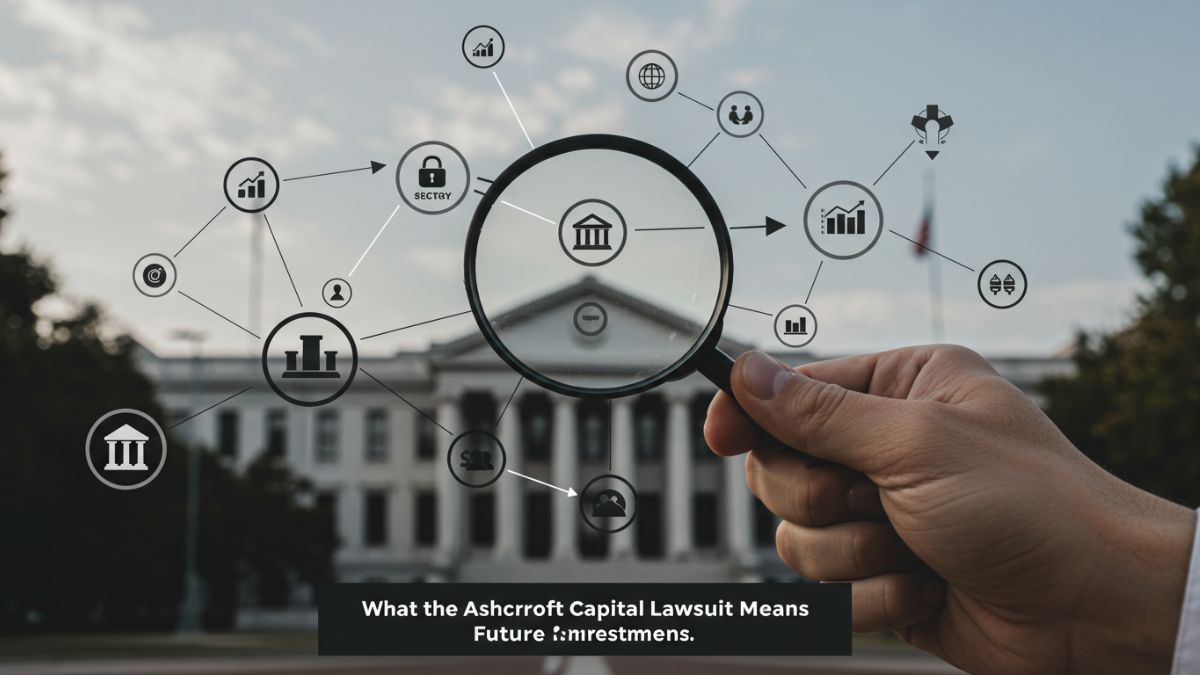
The financial world is always buzzing with news, but few stories capture attention like the ashcroft capital lawsuit. This high-profile case has sent ripples through the investment community, prompting seasoned investors and novices alike to reconsider their strategies. As allegations unfold and details emerge, many are left wondering what this means for future investments in real estate. Buckle up as we dive into this captivating saga that not only highlights the risks involved but also serves as a crucial lesson on due diligence.
Background on the Lawsuit
The Ashcroft Capital lawsuit has garnered significant attention in the investment community. It revolves around accusations of mismanagement and misleading investors regarding financial performance.
Plaintiffs claim that Ashcroft Capital did not fully disclose risks associated with their real estate projects. Investors argue they were lured by optimistic projections that ultimately fell short. This raises concerns about transparency in communication.
Moreover, the lawsuit highlights potential breaches of fiduciary duty, a key aspect when analyzing investment firms’ responsibilities to their clients. The ramifications could be widespread as it challenges trust between capital managers and individual investors.
As details emerge, many are left questioning how such situations can arise within reputable firms like Ashcroft Capital. The outcome may set important precedents for future investor protections and accountability standards.
Lessons Learned for Future Investments
The Ashcroft Capital lawsuit highlights the critical importance of transparency in investment practices. Investors should demand clear communication about risks and potential returns.
Building a strong relationship with fund managers is essential. Understanding their strategies and decision-making processes can mitigate surprises down the line.
Diversification remains a key strategy. Relying too heavily on any single investment or manager can expose you to unnecessary risk.
Investors must stay informed about market trends and legal developments. This knowledge will empower them to make better decisions and anticipate shifts that could impact their investments.
Consider seeking professional guidance when navigating complex investments. An experienced advisor can help identify red flags that may not be immediately apparent.
Importance of Due Diligence in Real Estate Investing
Due diligence is the cornerstone of successful real estate investing. It goes beyond just crunching numbers; it involves a thorough examination of every aspect of an investment opportunity.
Investors should investigate property histories, local market trends, and zoning laws. Understanding these elements can reveal potential red flags that might otherwise go unnoticed.
Property inspections are crucial too. A seemingly perfect building may hide structural issues or environmental concerns that could lead to costly repairs down the line.
Additionally, scrutinizing financial documents helps ensure transparency in earnings projections and expenses. This safeguards against unexpected financial pitfalls.
Engaging with local experts can provide valuable insights into neighborhood dynamics and future developments. Every piece of information counts when making informed decisions about investments.
Thorough due diligence not only protects your capital but also boosts your confidence as an investor in a competitive market landscape.
Advice for Potential Investors
Potential investors should always approach opportunities with a discerning eye. It’s crucial to assess the credibility of the company or individual you plan to invest with. Check for reviews, past performance, and any legal issues that may raise red flags.
Consider diversifying your investments. This strategy can help mitigate risk. By spreading your capital across various assets, you reduce exposure to any single investment’s failure.
Engage in thorough due diligence before parting with your money. Review financial statements and ask questions about the business model and operational strategies.
Stay informed about market trends and regulatory changes that could impact your investments. Knowledge is power in making sound decisions that align with your financial goals.
Conclusion:
The Ashcroft Capital lawsuit has sent ripples through the investment community. It serves as a stark reminder of the potential pitfalls when engaging in real estate ventures.
Investors must prioritize thorough research and risk assessment. Awareness of legal precedents can shape future decisions significantly.
As this case unfolds, it emphasizes staying informed about industry practices and regulatory changes. Knowledge is power in navigating these turbulent waters.
Potential investors should approach opportunities with caution, ensuring they are equipped with all necessary information before committing to any deal.
FAQ’S
What is the Ashcroft Capital lawsuit about?
The lawsuit centers on allegations regarding mismanagement and misleading information related to various investment opportunities offered by Ashcroft Capital. Investors have raised concerns over returns and operational transparency.
How might this affect future investments?
This situation serves as a cautionary tale, highlighting the critical need for due diligence in all investments. Future investors may become more cautious and seek detailed disclosures before committing funds.
What lessons can be drawn from this case?
One key takeaway is that no matter how reputable a firm appears, thorough research is paramount. Understanding financial statements, management practices, and historical performance can provide better insights into potential risks.
-

 GENERAL1 year ago
GENERAL1 year agoDiscovering the Artistic Brilliance of Derpixon: A Deep Dive into their Animation and Illustration
-

 Posts1 year ago
Posts1 year agoSiegel, Cooper & Co.
-

 Lifestyle1 year ago
Lifestyle1 year agoPurenudism.com: Unveiling the Beauty of Naturist Lifestyle
-

 Lifestyle1 year ago
Lifestyle1 year agoBaddieHub: Unleashing Confidence and Style in the Ultimate Gathering Spot for the Baddie Lifestyle
-

 HEALTH1 year ago
HEALTH1 year agoTransformative Health Solutions: Unveiling the Breakthroughs of 10x Health
-

 Entertainment1 year ago
Entertainment1 year agoGeekzilla Podcast: Navigating the World of Pop Culture, Gaming, and Tech
-

 Lifestyle9 months ago
Lifestyle9 months agoSandra orlow: Unraveling the Story of an Iconic Figure
-

 Entertainment1 year ago
Entertainment1 year agoKhatrimaza Unveiled: Exploring Cinematic Marvels and Entertainment Extravaganza
